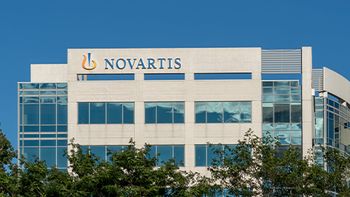
- Pharmaceutical Commerce - January/February 2015
FDA records a banner year in new-drug approvals, with 41
Roughly 40% are for rare diseases; PD-1 oncolytics capture industry attention
FDA finished 2014 with 41 drug approvals, up from 2013’s 27 and, according to a Reuters report, the highest level of approvals since 1996. The overall trend has been generally upward since a low point of 2007, when 18 drugs were approved.
In late 2013, Gilead’s SOVALDI treatment for hepatitis C was approved, and that set the industry on a brighter trend as it became a record-breaking blockbuster during the past year. This time around (not overlooking the fact that additional hepC treatments have been approved), the same excitement might be generated by the first so-called PD-1 oncolytics that were approved: Merck’s KEYTRUDA (pembrolizumab) in September, and BMS’s OPDIVO (nivolumab) in December; both for melanoma, which affects an estimated 76,000 patients. PD-1 inhibitors regulate how the body’s autoimmune system react to cancer cells; by inhibiting the protein’s activity, the new drugs raise the immune system’s cancer-fighting capability, and there are possibilities of this mode of action for treating lung and renal cancers.
An early December presentation by John Jenkins, MD, director of the Office of New Drugs at the Center for Drug Evaluation and Research (CDER), touted the agency’s performance in 2014 in reviewing applications and granting approvals. At that time, there were 15 first-in-class therapies out of 35 approvals, and many of them were approved as breakthrough therapies, which requires FDA to expedite the approval process. Both KEYTRUDA and OPDIVO were approved as accelerated, breakthrough products. Also numbering 15, there will be a record number of orphan drug approvals in 2014. (Orphan drugs, for rare diseases that affect fewer than 200,000 patients in any given year in the US, are set up with additional incentives for the innovator developer, under the Orphan Drug Act.)
Peter Saltonstall, president and CEO of the National Organization for Rare Disorders (NORD), an advocacy group, promptly jumped on the FDA data, noting that “We believe this milestone reflects momentum resulting from the combined efforts of stakeholders—patient organizations, pharmaceutical companies and FDA. Since 1983, when one orphan drug was approved, NORD has seen progress in orphan product development that has accelerated notably in recent years.”
Jenkins’ presentation also recapped performance details of FDA’s overall review process, noting that 97% of the New Molecular Entity (NME) approvals were completed within the schedule set by the Prescription Drug User Fee Act (PDUFA V), and 74% of them were approved on their first review cycle. Margaret Hamburg, MD, FDA commissioner, in the FDA blog, judged that these are “very impressive” numbers; but it should be noted that they are also a testament to the skill of biopharma drug developers in filing complete applications with significant data.
Another statistic to conjure with is that 61% of all drug approvals worldwide were granted first in the US in 2014. That statistic has been rising, unsteadily, since the early 2000s, when it was around 40%.
Articles in this issue
almost 11 years ago
Doximity crosses 50% line of engagement with physician populationalmost 11 years ago
Walgreens-Alliance Boots tie-up is formally approvedalmost 11 years ago
Nurses remain the top most trusted profession, says annual Gallup pollalmost 11 years ago
Dohmen acquires Siren Interactive, a rare diseases agencyalmost 11 years ago
UPS Healthcare Logistics picks up an asset in Polandalmost 11 years ago
Drug pricing debate is sharpeningalmost 11 years ago
The Chief Compliance Officer rolealmost 11 years ago
DSCSA dominates HDMA Distribution Management Annual ConferenceNewsletter
Stay ahead in the life sciences industry with Pharmaceutical Commerce, the latest news, trends, and strategies in drug distribution, commercialization, and market access.





